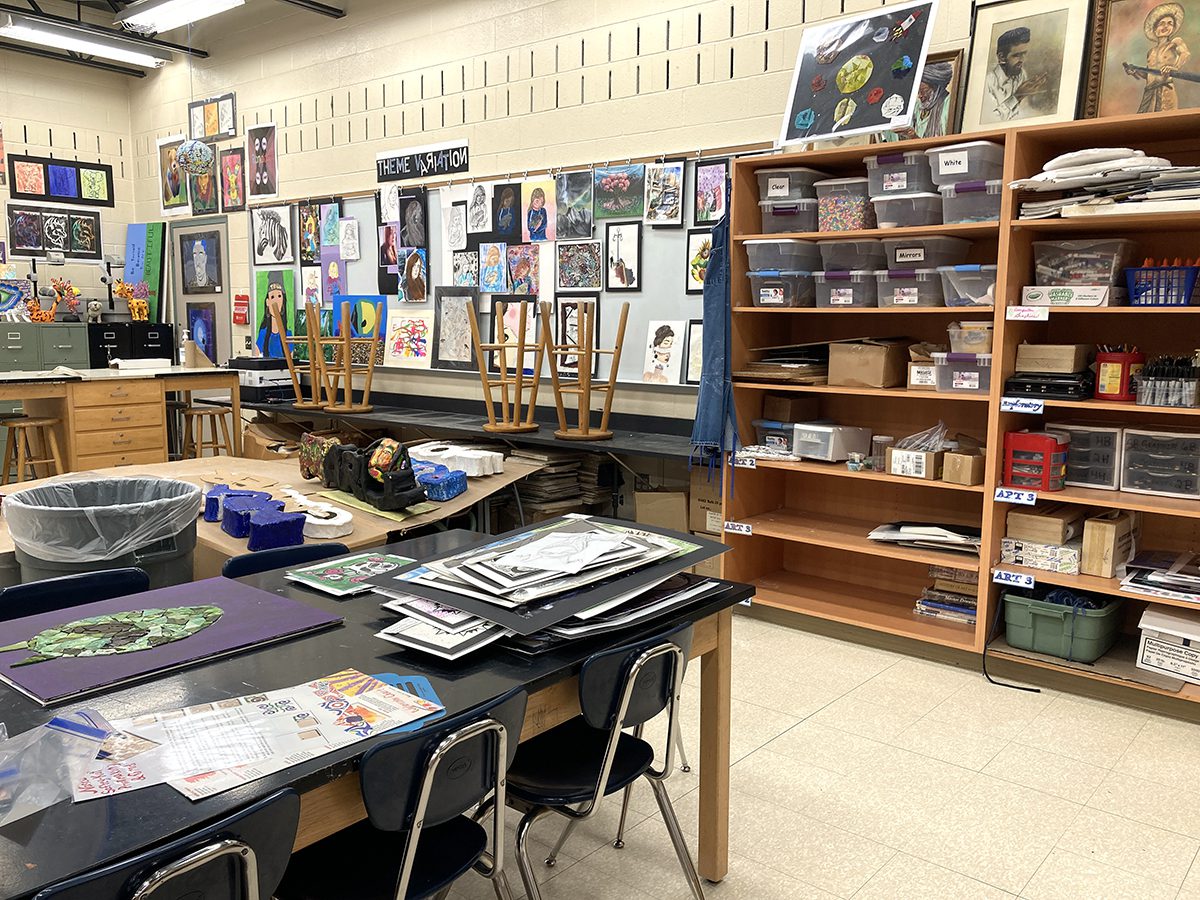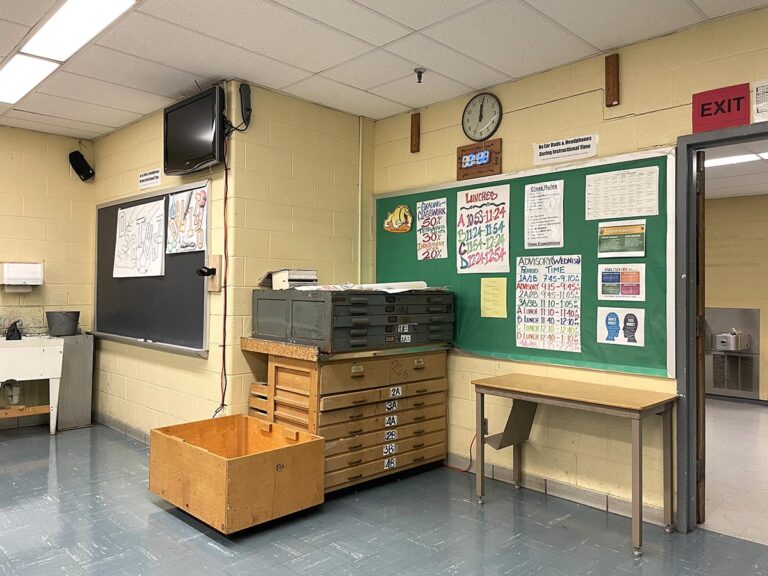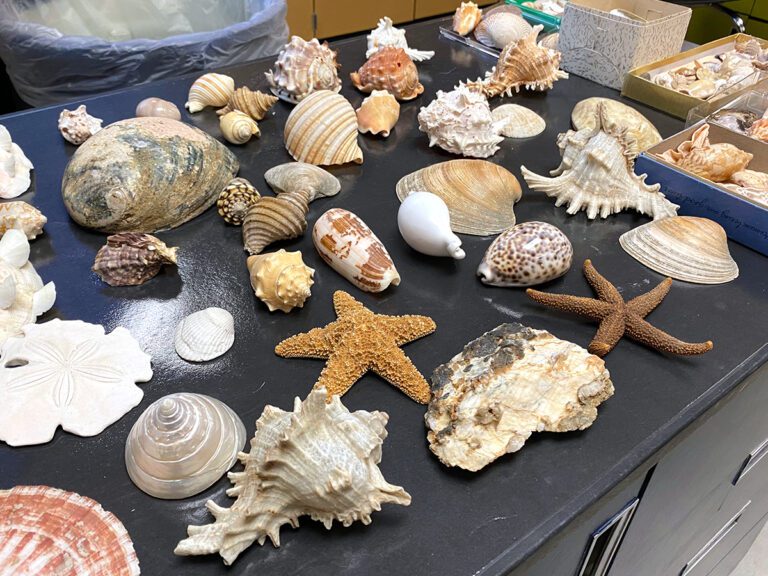Have you ever found yourself sharing your art room with another teacher? Maybe you found out ahead of time, or perhaps you learned just days before the first day of school. Sharing a room with a colleague, whether a fellow art teacher or from another subject, can create excitement, nervousness, or any combination of feelings. No matter when or how you find out you will be sharing a space, there’s much to think about and plan to help the school year go smoothly for both of you. Luckily, I have learned some lessons from sharing my art room in many contexts. I’m here to tell you my best tips so you can share a room with confidence and success.
Keep reading for three tips to help navigate sharing a room with another teacher.
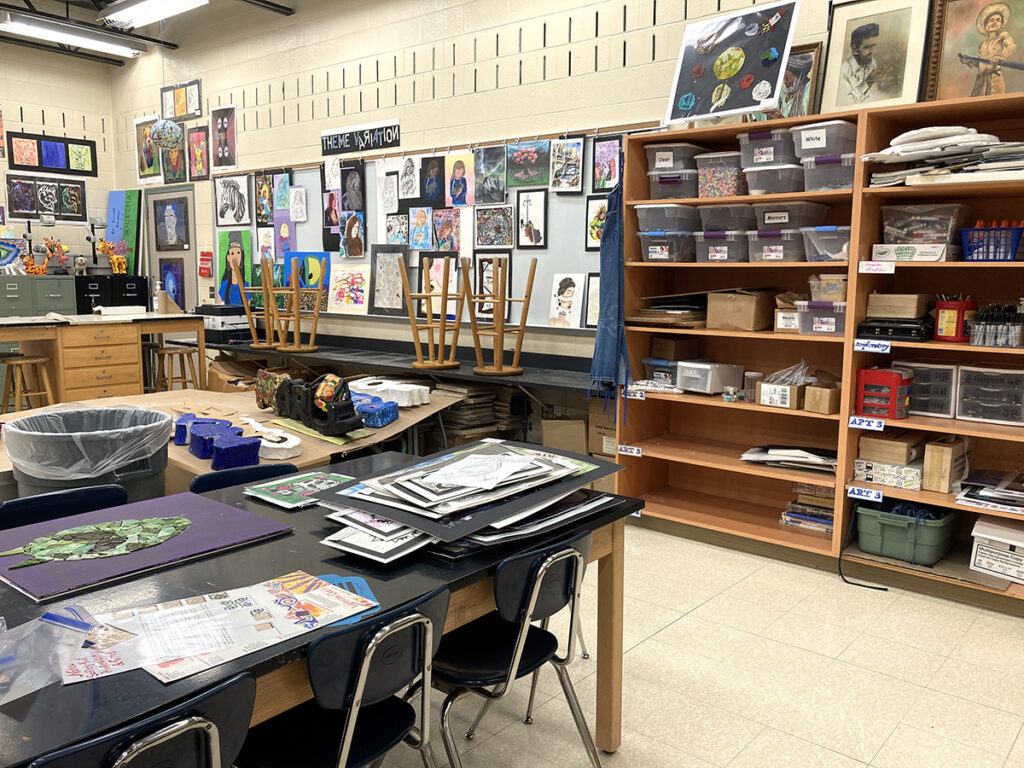
For most of my career, I have had the pleasure of having my own art room. When I transferred schools two years ago, that luxury disappeared in a flash. The spacious room I once called mine and the beautiful courtyard outside my window now belonged to someone else. I went from inhabiting an official art room to teaching on a cart (sharing 30 grade-level rooms), teaching in a gymnasium, teaching in a library, and sharing classrooms with the STEM teacher. Next year, I’ll also share a space with another art teacher.
When you start sharing a room, you will face many changes. From supply storage to the room’s layout and decor, making every decision is no longer your sole responsibility. Needing to open the doors of communication with your room partner becomes your new normal. Let’s look at three ways you can establish a positive relationship with your room partner.
1. Introduce yourself.
Start off on a positive note by introducing yourself. If you already have a professional relationship with your new room partner, touch base with a warm welcome. A friendly attitude can be the first step toward establishing rapport and building a successful working relationship.
When you introduce yourself, keep it brief and to the point. You can try something like this:
Hello, (insert name). I’m Jess Madenford, your new room partner. I’ve been teaching art for X years. I’m looking forward to sharing a room with you this year. I’d love to get to know you better and talk about how we can work together and find success.
Consider one of the following methods to connect and introduce yourself:
- Phone call
- Voice message
- Quick video
- Handwritten note
It is essential to take the time to connect with your new room partner. First impressions can make a huge difference in your professional relationship, so begin with a positive and friendly approach.

2. Find a common time.
Once you have connected with your new room partner, the next step is to find a common time to meet in person. If at all possible, meet in your shared classroom. During this visit, you will both want to get an idea of the other’s needs within the space and within the relationship. Set aside a reasonable amount of time to discuss important topics and problem solve together. Details can vary when sharing a room with another art teacher versus a teacher from a different content area. For example, suppose you share a room with another art teacher. In that case, your room layout will significantly influence the conversation if you have different teaching approaches. If one art teacher offers abundant choice with open media centers while the other prefers keeping supplies inside cabinets, material storage will require troubleshooting.
Some topics you may want to address during this meeting are:
- Wall space and bulletin boards
- Room decorations
- Layout and furniture arrangement
- Supply storage
- Classroom management
- Desk space
- Artwork and sketchbook storage
- Curricular approaches
- Best method of contact and contact information
3. Communicate.
Communication is a crucial part of any professional relationship. After all, it is the common thread between each of the tips in this article. It is so essential that it needs its own place on this list!
Here are four reasons why communication is key when sharing a classroom:
- Your room partner has your back.
Art teachers know all too well how art supplies seem to disappear when we least expect it. Give your new roommate a heads up and politely ask them to be on the lookout. Your room partner will be able to respectfully deny access to your precious supplies when other teachers ask to “borrow” some while you are away. - “Oh no! I forgot to turn off the…”
Have you ever sat straight up in bed, realizing you forgot to turn off or unplug your new set of black light lamps? Or even worse, you’ve remembered you left the coffee pot turned on while rushing to the staff meeting? Having someone come into your room soon after you leave can give you a wave of relief when you have forgotten something at school. Remember to show your appreciation any time your room partner helps you out! - You have help with arranging desks.
It can be helpful to have another set of eyes and hands to make seating arrangements. Some traveling art teachers see several hundred children and 30+ classes across many different rooms. That’s a lot of time spent figuring out where students should sit! Make this task cooperative in the spaces you share to make it more manageable. - Set boundaries.
When you are working with someone who shares similar values about organization, classroom management, or room aesthetics, sharing a room can seem like a breeze. Other times, you may be the highly organized one who is frustrated with constantly clearing another teacher’s stuff off your desk every morning. In this instance, you may wish you had set boundaries early on.
Before the school year begins, find common ground on topics that matter to both of you. Set clear boundaries for how you keep your classroom organized and respect each other’s personal and shared space. Prepare to reopen the conversation if necessary throughout the school year.
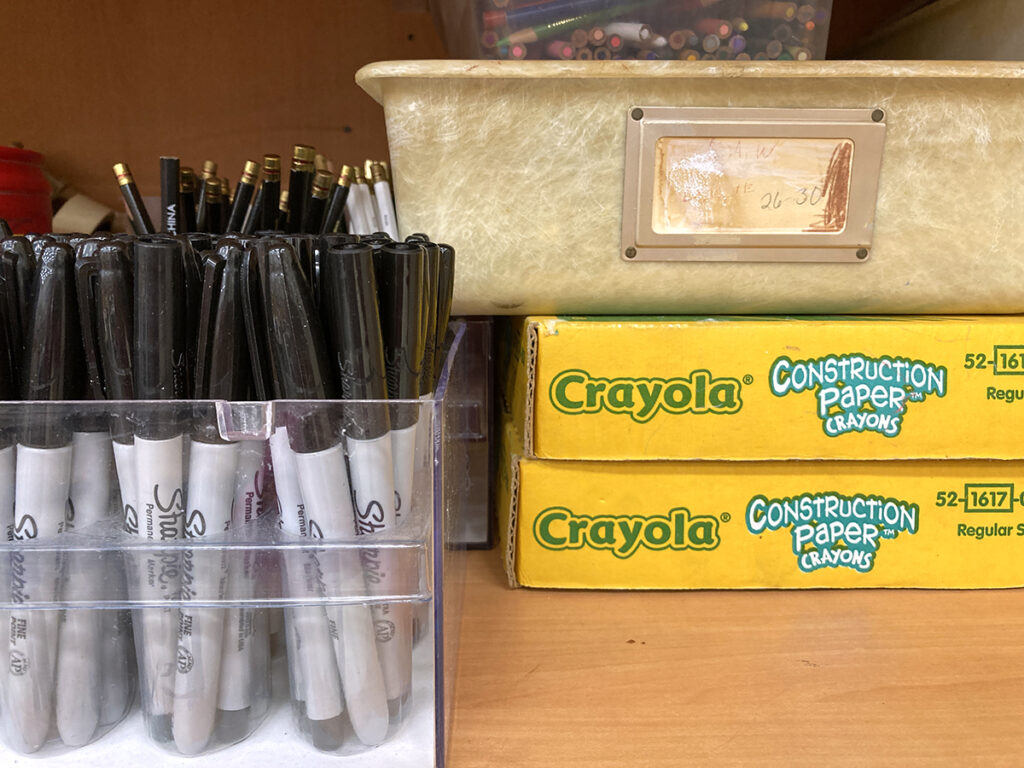
If you need tips for managing your shared space, AOEU has some resources for you to check out:
- Managing the Art Room Graduate Course
- Developing Essential Elementary Procedures Pack in PRO Learning
- 3 Ways to Cultivate an Inclusive Art Studio for All Abilities
- Establishing Creative Sanctuaries-5 Tips to Redecorate and Reorganize for Back to School
- 5 Things to Consider When Setting Up Your Art Room
Sharing your art room with another teacher may be tricky, but it’s possible. No matter what challenges come your way, take time for proper introductions, find a common time to meet, and open the doors of communication. It will give you a big advantage when planning your school year. Preparing before you start sharing space will give you both the confidence to begin the year with success.
What tips can you offer other art teachers sharing an art room?
What challenges do you anticipate when sharing a studio classroom space?
Magazine articles and podcasts are opinions of professional education contributors and do not necessarily represent the position of the Art of Education University (AOEU) or its academic offerings. Contributors use terms in the way they are most often talked about in the scope of their educational experiences.
